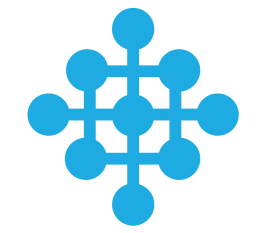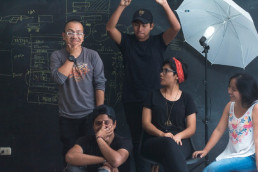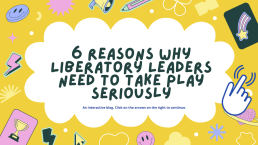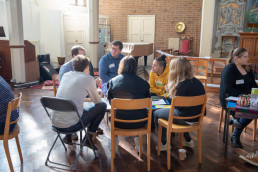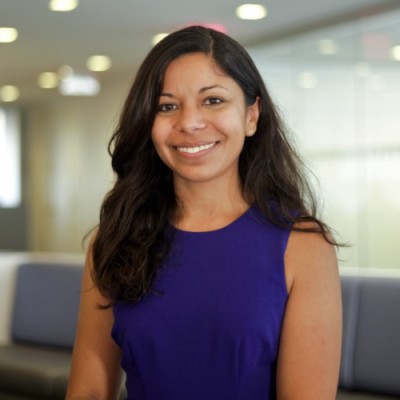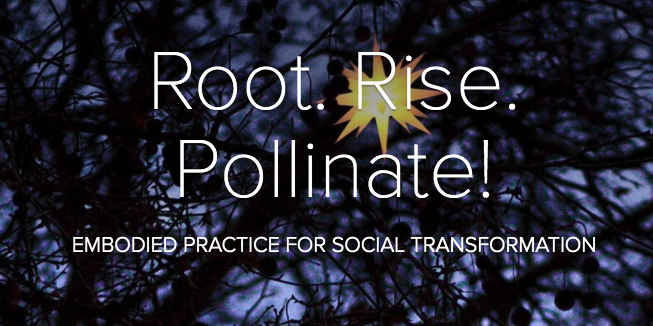Understanding network strategy
Every organization needs an effective strategy. Strategy can refer to an overarching strategic plan at the organizational level or a strategy towards achieving specific organizational needs and goals. A strategy will set the way forward for an organization in alignment with its overarching vision and mission. It will articulate the priorities and directions the organization should take as well as convey the “what”, “why”, and “how” to accomplish its goals, often within a given period, by clearly defining the pathways towards achieving them.
At Collective Mind, we’ve learned a number of lessons through our work with networks developing strategies and strategic plans.
Context matters
Strategy for networks is different than strategy for more traditional organizational models. Networks are a unique type of organization with a complex operating model. They are different in how they’re organized, who’s involved, and how they get things done.
First, networks are horizontal, flat structures: they are not top-down, hierarchical, or directive. They are loosely controlled, with multiple mechanisms for collaboration and without any mechanisms for command and control.
Second, networks are comprised of members — without members, you don’t have a network — and the complexity of that membership typically matches the complexity of the network’s issue area. As such, the network must meaningfully integrate a wide diversity of people and/or organizations in an equitable fashion. It must be flexible and agile enough to capture the emergence that arises from such diversity and the interconnections across it.
Finally, because of these characteristics, networks operate differently. They seek to harness the collective intelligence within them, dispersing leadership and sharing decision-making. They typically don’t procure deliverables but focus on stimulating activities by their members, who are responsible for creating the outputs of the network. This relationship between members and the network is typically voluntary and about creating shared value, not premised on a contractual relationship. Consequently, the network’s staff (if there is a staff) aims to support its members by helping facilitate the production of outputs, rather than directly implementing and delivering those themselves.
How networks are different influences strategy
Within this unique and complex operating environment of networks, we can consider strategy differently in at least three ways: process, content, and implementation.
Process: we must ensure that the process to develop the strategy or strategic plan empowers members and any other stakeholders and establishes their ownership of it. This requires a participatory, inclusive process with mixed methods for inclusive, meaningful participation. An iterative and adaptive process should build from one step to the next toward the final strategy. The steps of the process should ensure ongoing triangulation and validation of key ideas, needs, priorities, and pathways with stakeholders as they are developed.
Content: we must ensure that the strategy or strategic plan represents a collective effort. It should set collective priorities and determine the collaborative paths to achieve them by facilitating consensus-building throughout the process. The plan’s priorities and goals should be grounded in the needs, interests, and capacities of the membership. The substance of the plan must reflect the goals, expectations, and motivations of the members.
Implementation: we must clarify and define who will implement the strategy. As explained above, in the context of a network, it must be its members that produce the outputs with support from the network staff. We must clarify how this can be done realistically and right-size the strategy to ensure the feasibility of that implementation (for example, recognizing the limitations on members’ capacity, time, etc.). We must ensure that the plan supports the network to align energy, resources, and stakeholders for collective impact.
A clear and effective strategy will define in what direction the network and its membership will move forward. It will reflect and align with the needs and interests of its members, defining initiatives and activities through which members can participate and collaborate. Consequently, it will clearly articulate the unique added value that the network as a collective can create that is greater than the sum of those parts.
Interested to hear more about how we approach strategy development with networks and how we can support you? Contact Kerstin Tebbe at kerstin@collectivemindglobal.org.

Kerstin Tebbe has almost 20 years of experience supporting networks and multi-stakeholder collaboration. Her passion for networks was ignited by 6.5 years (2008-2014) spent on the Secretariat for the Inter-Agency Network for Education in Emergencies (INEE) where she coordinated an international technical working group, established a pan-African knowledge hub, and served as Deputy/Acting Director of the network. As a consultant from 2014 to 2019, Kerstin supported networks and multi-stakeholder initiatives around the world with strategy design, program review, knowledge management, capacity building, and facilitation. Kerstin founded Collective Mind in late 2019 after many years of independent study and research on networks. With Collective Mind, she has supported networks from local to global on a wide range of challenges. Kerstin has lived and worked in New York, Buenos Aires, Paris, Nairobi, Geneva, and Washington DC. When she’s not thinking about networks, she’s dancing.
originally published at Collective Mind

Network Weaver is dedicated to offering free content to all – in support of equity, justice and transformation for all.
We appreciate your support!
Peer Learning Changes Everything — but How to Make it Work?
Increasingly in networks and communities I’m part of, the activity participants see the most value and impact in — and engage with regularity and enthusiasm — is peer learning circles.
I have found that peer learning circles are fantastic at:
- Helping people get direct answers to challenges they face and reducing repeated mistakes across projects and organizations
- Introducing people to new and diverse perspectives that can foster creative ideas and spark mindset shifts
- Providing a safe space to raise important but tough issues people might not otherwise share
- Fostering new and deep relationships, which can (and usually do) form the basis for longer-term collaboration
- Creating a sense of support, solidarity and collective power, like “we’re not in this alone” (this is not to be undermined!)
They also, when done well, can expose participants to new leadership skills and mindsets, help a community realize it only need look inward for answers, and sustain connection and engagement over the long-term.
And they function beautifully in organizations, communities, schools, movements, networks, etc.
* * *
A quick clarification: I’m not talking about working groups, workshops, webinars, or meet-ups. These are, I think, great for building awareness, connecting to the bigger picture, and communicating to a group.
But what they don’t facilitate is deep, meaningful changes in the way we think or work over the long-term.
When I say peer learning circles, I mean small groups of people who regularly and consistently meet to connect and exchange. Sometimes these are also called “clusters” or “communities of practice”.
* * *
So many times though, I’ve seen learning circles fall short of achieving what they set out to achieve…
Often, we set them up and then let them “go free” — expecting them to continue on their own.
But what happens instead is, after an initial spike of energy and interest, things start to fall through. Some people don’t show up. Meetings get cancelled last minute. Energy dwindles. Then, silence.
And once that happens, they are very hard to re-create and re-invigorate.
Over the past year I’ve been trying to determine the right “formula” to help such groups thrive. So that groups meet regularly, and participants feel high value in them and a desire to engage. While at the same time, the burden of coordination and facilitation is light enough that they can scale with ease.
There’s a lot of tiny pieces that, when they all come together, allow for many learning circles to thrive. Here’s what I’ve come up with so far:
- Outline a clear and simple purpose. Make sure participants know exactly what the circles are trying to achieve. As an example, I often say: to get advice from peers for questions you face, while building deep relationships.
- Establish — and repeatedly emphasize — shared principles. Create a brief list of “community guidelines” that foster safe and trusting spaces, like everyone has a voice / we valorize diversity / what’s said here is confidential. Make sure they are written in calendar invites, and repeatedly shared at the beginning of meetings.
- Introduce a straightforward process. Make it super easy to self-facilitate, with only a few steps that are achievable in a short time frame. My go-to processes: peer assist, troika consulting, case clinic (I’ve also been recommended, but haven’t yet used, Working Out Loud). Leave only some room for flexibility — I usually recommend adding a) personal updates, b) round-robin sharing of exciting news, and c) a closing question like “how will you take what you’ve learned today to your work / life?”
- Clarify commitment. This makes all the difference. Draw out time requirements for meetings (e.g. 60 minutes monthly) and if anything’s expected beyond (e.g. one group I know agreed to “never leave with a to-do list”). And facilitate it so participants confirm their commitment to each other (not just to you as the coordinator) in a meeting or group message/email— this fosters peer accountability, which is a powerful force.
- Agree on an end date. Like, 6 months. This clarifies that the circles won’t last indefinitely, and helps people decide if they want to engage now, or later. After the end date, switch people around. Form new clusters and relationships. Let knew people join, and give current participants the option to opt-out.
- Matchmake groups. Sometimes letting people self-select is useful, but often the back-end work of weaving — finding synergies and fostering new connections — is more powerful. Create groups of people that don’t know each other but can complement each other in some way, e.g. location, area of interest, common needs, position in the organization. There is no perfect formula; sometimes “I just think these people would really hit it off” is enough!
- An optimal size is 6–8 people per group. Smaller groups risks that if 1 or 2 can’t show up, meetings get cancelled. Larger groups reduces participants’ time to speak as well as the sense of cohesion and relationships.
- Appoint, and consistently support, a group “lead”. Ask people to self-nominate, or select someone who is motivated and willing to input the extra time. Clarify their role: to make sure the purpose, process, commitments, and principles are adhered to — and those joining get value from participating. And regularly connect with these leaders, in 1:1’s and in small groups, so they can also learn and troubleshoot together.
- Do the scheduling yourself. I’ve seen this too often: groups fall through for one simple reason, the scheduling gets too complicated. So take that off their hands! That way, they can focus on what matters: the dialogue and the relationships. Practically this means helping each group find a recurring time (use Doodle), then set up a recurring invite on a common community calendar. If it’s online, see if they need a video conferencing tool.
- Give nudges to help build habits. Sometimes, people just need a small nudge or reminder to show up (especially if they are not strict calendar users). One trick I’ve used: I set an auto-reminder on the common calendar to send a template message a few days before each cluster meeting saying essentially: “please remember to RSVP — it’s of respect to your group lead who is volunteering their time.” Another trick: inside the calendar invite, I put the purpose, principles, commitment, and link to the structure — so it is ever-present. Remember these groups are usually “external” to participants’ everyday lives, and they will usually appreciate it if you help them internalize it.
- Finally, connect to a larger purpose. Small groups are lovely, but sometimes participants can say “we don’t see how we’re part of the bigger picture.” Find ways to integrate what they’re learning with the larger network’s activities, like inviting groups 1-by-1 to share-out what they’re learning in open events.
Two other things I’ve learned the hard way: don’t over-expect, and don’t rush it. Relationship and trust-building takes time, and people also need to understand what others can offer. Asking a group to do too much (e.g. co-create an “outcome”) too early can quickly lead to drop-off.
Anything else you’ve found helpful?

Brendon Johnson is a seasoned changemaker with a passion for strategies and models around networks, communities, participatory organizing, and collaborative action
Originally published at Medium
Photo by Jose Aljovin

Network Weaver is dedicated to offering free content to all – in support of equity, justice and transformation for all.
We appreciate your support!
donate in the box above or click here
6 Reasons Why Liberatory Leaders Need to Take Play Seriously

When was the last time you played, did something just because it was fun and felt good? Did you finish feeling enlivened, relaxed, energized, or something similar? Leadership Learning Community has been exploring the roles of fun and play in our activities. This exploration didn’t start out super intentional, but rather as a reaction to the pandopalypse we’ve all been living in. Over time LLC began discussing play in relation to our work, referring to aspects of our work as “playful” or describing meetings and convenings as “play spaces.” For us, this isn’t a cutesy communications strategy. As LLC began to turn our attention to play, we realized that play, when grounded in collective purpose and steeped in values, can be a liberatory act.
Here are six reasons why we believe play can help leaders embrace liberatory practice.
Fuel Ideation
- Play can be described as “something that’s imaginative, self-directed, intrinsically motivated and guided by rules that leave room for creativity.” By creating space for creativity and imagination, play helps to quiet the self-conscious, judgemental inner critic. This voice discourages deviations from the known norm and makes trying on new things feel too risky. Without that voice, perhaps there is room for a little bit of magic to invite in new possibilities. Taking a playful stance allows us to adopt a child-like or beginner's mind, and helps us to develop mental plasticity and adaptability while simultaneously reminding us that our options aren’t all pre-determined and that there is space for the not yet known. This opening of possibility is critical as liberatory transformative efforts are dreaming and imagining into being something that does not currently exist. To do that, we have to stretch our imagination muscles.
- Practice: Start the meeting with a playful check-in question like, “If you could go back in time (or to the future), who would you want to meet?” or pick a favorite zoom filter to start the meeting with. Check out more of our check-in questions here.
Nurture, Healing & Wellness
- Play is an effective way to manage stress and can be a tool of both self and collective care. Play helps us to be in the moment, similar to meditation. In contrast to oppressive practices, which are confining and restrictive, sapping our spiritual and figurative energy; the enlivening nature of playful activities may help to heal these wounds.
- Practice: Host meetings near a park, the ocean, or in nature. Take a walk. Find new analogies for the work we do.
Create New Models of Strategic Thinking
- Playing makes things real, during play we don’t just imitate we also imagine and embody (something). Trying on liberation in play spaces/playful ways allows us to feel the benefit of liberation in the moment while we are learning more than we currently know. This focus on liberation now means that during play liberation doesn’t just have to be a future goal. In addition, some studies suggest that play supports memory and thinking skills, so play may literally help us think our way to freedom.
- Practice: Do some creative writing. Some of us have and are taking a writing course with Dara Joyce Lurie. She shares a quote from Edward de Bono, “Rightness is what matters in vertical thinking. Richness is what matters in lateral thinking. Vertical thinking selects a pathway by excluding other pathways. Lateral thinking does not select but seeks to open up other pathways. With lateral thinking one generates as many alternative approaches as one can. With vertical thinking one is trying to select the best approach, but with lateral thinking one is generating different approaches for the sake of generating them.”
Expand Leadership Opportunities
- Because play utilizes “creative rules” that are distinct from the rules and restrictions of regular life, in play, there exists the opportunity, though not the requirement, to separate capacity from expertise. All of a sudden, players “can” do things even if they aren’t experts at said activity. So you can play at being a pilot without actually knowing how to fly a plane. In playful spaces more people can function as leaders, meaning more people can be actively involved in imagining liberatory practice into being.
- Practice: Acting and improvisation exercises like “Questions Only” where you act out a scene given to you with only questions.
Build Community:
- Play offers us the opportunity to connect. When we create safe play spaces there is little risk to engaging. People can show up with a less performative stance. BIPOC leaders frequently find themselves under a spotlight or a microscope. The labor of being forced to code-switch or deal with being othered is exhausting so I imagine that BIPOC leaders especially are eager for safe spaces to be themselves. Where showing up as one’s whole self is an invitation and a demand, and for the purpose of supporting the BIPOC leader not to be of utility to others. Often BIPOC leaders are told to show up as their full self because observing BIPOC leaders is good for an observer, not for the benefit of the BIPOC leader.
- Practice: Shorten the strategic side of the meeting, and incorporate the karaoke, fun, and games as part of the meeting, not just extra at the end.
An Invitation to Wholeness:
- By allowing us to focus on pleasure and fun rather than objectives and outputs, play encourages us to be more than what we can produce. Perhaps play is akin to rest in that way, and maybe we can view embracing the revolutionary possibility of play in the same way that we have begun to respect how rest can be resistance. This need for play spaces may prove to be especially important for BIPOC leaders given that kids of color are often adultified early, and deprived of the space to play freely. By recapturing play, as we have attempted to reclaim rest, we may enliven our work and find new paths toward liberation.
- Practice: Make space for play at every meeting whether it’s a check-in, the location, the activities, or the bonding event. Make play and joy part of your community agreements so they show up intentionally during your work.

Ericka Stallings is the Co-Executive Director of the Leadership Learning Community (LLC) a learning network of people who run, fund and study leadership development. LLC challenges traditional thinking about leadership and supports the development of models that are more inclusive, networked and collective. Prior to LLC, Ericka was the Deputy Director for Capacity Building and Strategic Initiatives at the Association for Neighborhood and Housing Development (ANHD), supporting organizing and advocacy and leading ANHD’s community organizing capacity building work.

Nikki Dinh is the daughter of boat people refugees who instilled in her the importance of being in community. Though she grew up in a California county that was founded by the KKK, her family’s home was in an immigrant enclave. Her neighborhood taught her about resistance, resilience, joy and love.
originally published at Leadership Learning Community
Network Weaver is dedicated to offering free content to all – in support of equity, justice and transformation for all.
We appreciate your support!
donate in the box above or click here
by Ericka Stallings and Nikki Dinh, co-executive directors of Leadership Learning Community
Strengthening Social Connection and Opportunities in Rural Communities
This brief describes an unfolding learning journey intended to strengthen social connection, resident voice, and agency to address inequities in rural health and well-being. Along the way, we have come to realize the important lessons for each of our institutions and ways in which we are better off for having taken this approach to our work.
At St. David’s Foundation, we believe that realizing health equity to minimize the consequences of poverty and racism reflected in the social determinants of health is foundational in our work in Central Texas. Rural communities are dramatically under-represented in philanthropic investments nationwide and in Texas, and the Foundation’s own balance of investments skews toward initiatives that serve urban populations. When philanthropic dollars are invested in rural communities, they are typically directed to the few established nonprofits and local government entities that implement programs or provide services to residents. Community members, especially people experiencing vulnerability and isolation, are rarely asked what they need to improve their health and quality of life and how they may utilize the power inherent in their communities to contribute to those improvements. The most common observation from the philanthropic sector is that “these residents” are rarely poised to receive and control funds to work on the issues they believe are most important for the health and well-being of their own community. Listening and enabling capacity can change that.
Listening to our Rural Neighbors
After a sustained period of building deeper ties and stronger relationships in our rural communities surrounding Austin and Travis County, the Foundation learned that many of our rural neighbors felt disconnected from and ignored by the Foundation and local decisionmakers in their communities who decide how resources are prioritized and distributed to address community needs. Residents from the surrounding rural counties of Bastrop, Caldwell, Hays, and eastern Williamson County expressed an interest in working with the Foundation and their peers on priority concerns including youth, mental health and substance use and misuse, food insecurity, and affordable housing.
Community Capacity Building and Enabling as Rural Strategy
In partnership with The Strategy Group (TSG), a national consulting firm with expertise in catalyzing resident-led community networks focused on health and well-being, the Foundation invested in community capacity building (CCB) strategies to engage interested residents in working collaboratively on issues of importance to community members and enable their inherent power to participate in problem solving.
Informed by residents, the Foundation and TSG co-designed an approach that incorporated key community capacity building outcomes so that residents could develop their own solutions to pressing self-identified community health concerns. TSG also offered a process for the Foundation to build its own capacity to invest differently in rural communities— an approach that invested in network infrastructure, resident leadership development, nonprofit leadership to partner with and support community networks, and connected people experiencing vulnerability and lack of connection to opportunities for community development.
The Foundation’s rural strategy centered social impact networks (Plastrik et al 2014), network weaving (Holley 2012), and sustained community engagement to create an expanding, diverse, inclusive resident-led network focused on health and wellbeing -inequities often reinforced by historical and structural legacies of exclusion and privilege. Stuart (2014) notes, “this is one of those cases where a commitment to social justice is crucial. It is important to consider who is included in the “community” that is leading the process. Who is excluded from community leadership? Whose voices are missing from community debate? Whose interests are being served?”
And if the community is driving decisions about their own development, what does that mean for how the Foundation should be investing in community?
Centering Equity and Equitable Opportunity
As St. David’s Foundation has embraced and prioritized health equity, rural investments evolved to become more place-based and community-focused. How the Foundation showed up in the community (and how frequently), how grant opportunities were presented, and how funds were distributed when CCB was the overarching purpose changed the nature of the relationship between funder and community. In our rural work, the Foundation recognized that a portion of our rural investment needed to give the community control over decisions and resources to determine what resources were needed to spur or make lasting change.
Bringing it all Together in Central Texas
The community network approach in Central Texas prioritizes:
- Centering the voices and lived experiences of rural BIPOC residents (equitable opportunity);
- Seeding a network of interested resident leaders who have a deep understanding of their and their neighbors’ needs to direct their own community development work; creating new relationships; and offering new ways of working, thinking and leading in community; (i.e., social impact networks);
- Engaging and supporting local residents to organize themselves to work on projects that move the community from talking about problems to taking action on problems (i.e., self-organizing);
- Supporting residents who want to develop the leadership skills to engage other residents to work together in a resident-led network focused on health and wellbeing (i.e., network weavers); and
- Putting a pool of resources into the hands of those who have the lived experiences of health inequity, poverty, social isolation; are closest to community problems; and who want to work with their peers to improve community health and wellbeing from a solidarity stance.
What are Networks and Network Weavers?
Social impact networks (like the ones emerging in Central Texas) are constellations of people, organizations, and communities connected by a shared purpose to make change. In the Central Texas network, there is a high-level purpose to improve the health and wellbeing of residents in the region.
Network weavers are residents in the Foundation’s rural service area who have chosen to be a leader in the network; they are the “engines” of our regional network. Weavers strategically connect other residents, convene groups of interested residents, coordinate small projects aligned with resident interests and needs, and work to grow the network and the projects the network is interested in pursuing. Holley (2012) describes a network weaver as “someone who is aware of the networks around them and explicitly works to make them healthier. Network weavers do this by helping people identify their interests and challenges, connecting people strategically where there’s potential for mutual benefit, and serving as a catalyst for self-organizing groups.”
The Foundation provides operating support for TSG as well as funds to support network infrastructure (e.g., communications, evaluation, training, storytelling), stipends for weaver leaders, and shared gifting circles. To date, over 100 residents have been trained to be network weavers in Central Texas.
Building Community Leadership
The Foundation’s investment in community capacity building by catalyzing resident-led networks and training residents to become network weavers is designed to engage and support residents to contribute their time and talents (i.e., community leadership) to solve pressing self-determined health and wellbeing challenges in their own communities. Residents also participate in monthly peer assist sessions which enable real-time feedback and advice from peers as they practice their leadership skills.
Participatory Grantmaking
Using participatory grantmaking processes and resources, network weavers are supported to identify local problems and then work collaboratively with other residents to co-design and test solutions. Shared gifting emerged as an important participatory grantmaking tool to support weavers during the second year of project implementation. We asked ourselves: “how can a small pool of grant funds be used to foster connection across different communities and authentic collaboration, rather than competition?” Shared gifting allows residents to decide what the most urgent community needs are, rather than the Foundation, and then to grant dollars to community projects they wish to support. There are no required outcomes of the process other than what is determined by the participants during the shared gifting process.
From participant reports of the shared gifting process, we were excited to learn that a shift in control of grant funds from the Foundation to the group of network weavers (residents) created an environment of social connection, equity, encouragement and support, feelings of abundance, and community. The typical grantmaking experience of competition and scarcity often experienced by potential grantees when responding to competitive grant opportunities was not reported by participants. Instead, weavers were excited to make new connections with other weavers, hear about new projects happening in their community, extend offers of time, talent, and treasure to other weavers, and expressed pride to be able to support those projects with the resources they controlled.
Conclusion
Residents who have participated in network weaving and participatory grantmaking have shared a common experience of personal and professional transformation, social connection, empowerment, and awareness of new possibilities and promise for their communities. The Foundation’s experience of investing in rural communities and its people by creating opportunities for resident decision making about how resources should be directed to pressing issues in their communities has revealed new possibilities for grantmaking and use of our social capital to advance the health and wellbeing of rural residents in Central Texas. Further, the experience with weavers as grantmakers underscores the importance and urgency of integrating community voice consistently in the Foundation’s equity-driven journey.
Voices and Learnings
Network weavers were invited to share their thoughts on how weaving has influenced their personal and professional lives. The themes found in their comments were that network weaving:
- Offers both professional and personal value to persons.
- Provides a framework that is valuable to tackle complex community issues.
- Facilitates making connections that create change in the community.
- Allows the use of shared gifting as a unique learning, connecting, and growing experience.
- Fosters among network weavers a desire to build new skills and capacities to continue to strengthen their work within their own communities.
- Encourages persons who had existing networks to make those networks more effective, efficient, and stronger by implementing what they learned in the Network Weaving learning opportunity.

“Weaving has tremendous value as it has empowered me to create with others outside of my usual network, helping to expand my reach and capacity to support others.“
“Throughout the past few years, in a mid-COVID society, Network Weaving has proven to be a skill set and collective necessity to maintain community collaboration. As work-life has evolved and more individuals experience isolation, Network Weaving has made the ability to connect (in-person or virtual) a go-to process for me in my personal and work life.“
Krystal Grimes, 2019, Shared Gifting Grantee/Grantmaker
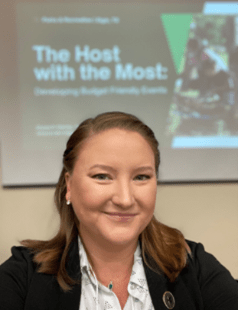
“Ultimately, all of us have the same end goal of building a better community. We all are here for the same reason; we’re all doing this work because we have a passion for community building. And network weaving has really given us that opportunity.”
“It has given me a really clear framework for what I’m doing. It’s not something that lives in my brain. Now. it’s an actual process and an actual framework that I can utilize to share information.”
Elizabeth Marzec, 2021, Organizational Leader, Shared Gifting Grantee/Grantmaker

“Helping the community that you live in, helps you, it helps your children and helps your grandchildren. So, I think that is the point in the future that weaving really impacts.”
Linda Quiroz, Shared Gifting Grantee/Grantmaker
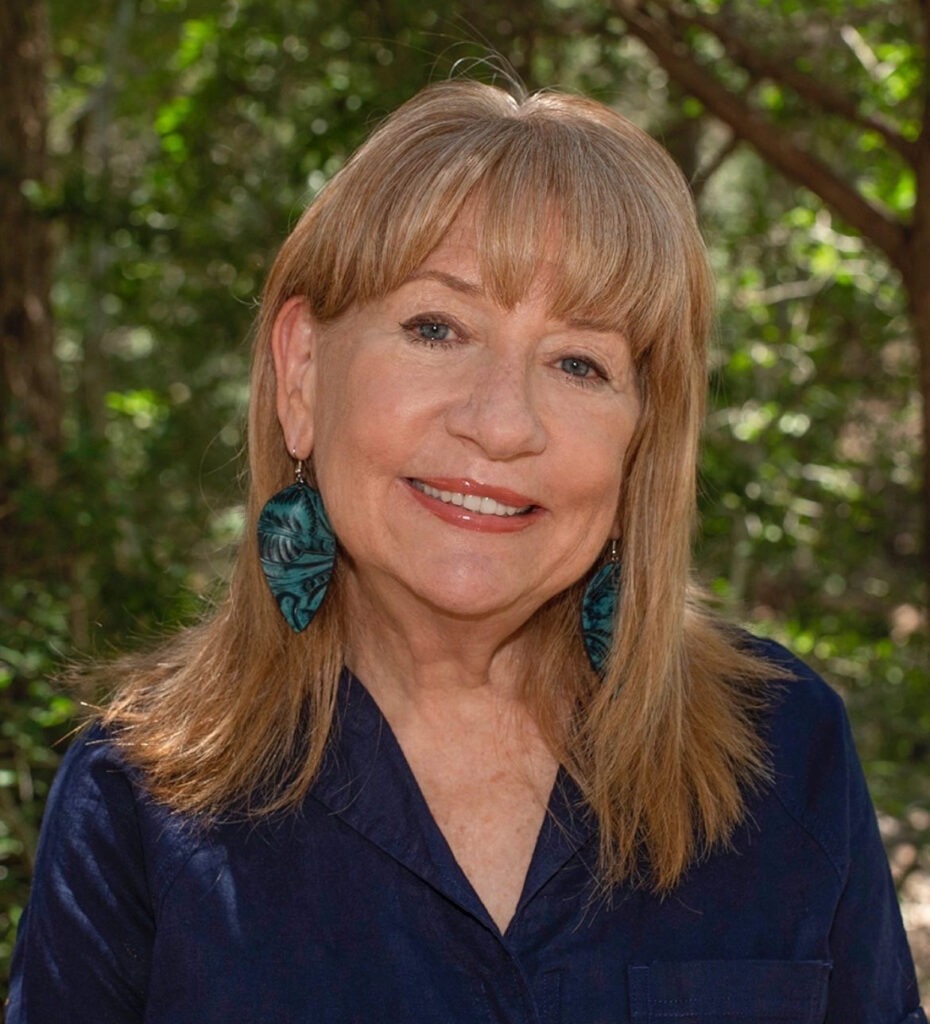
“Bringing leaders together, making community change, and having people who never thought of themselves as a leader know that they can all make a difference. I love that.”
Kathleen Moore, 2019, Shared Gifting Grantee/Grantmaker
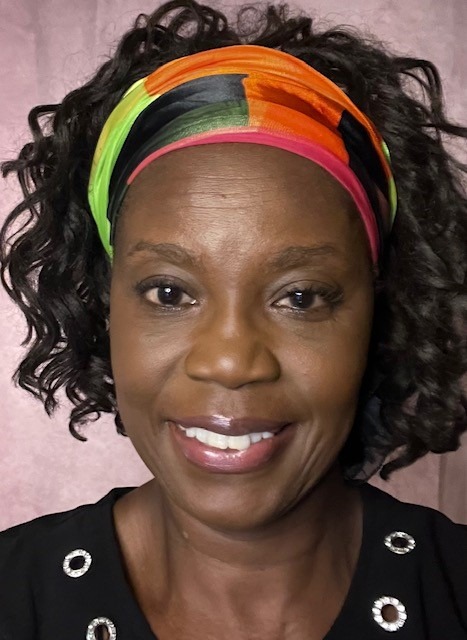
“Prior to network weaving, I had no idea how to get this passion, this idea realized . . . I’m trying to be involved in the community. But I needed direction. I needed ideas, I needed strategies. And so, when I was invited [to learn about network weaving], it gave me what really felt like a breath of fresh air, because I’m going to be around peers that can help me along the way. And then also for me to help others.”
Sonya Hosey, 2021, Shared Gifting Grantee/Grantmaker
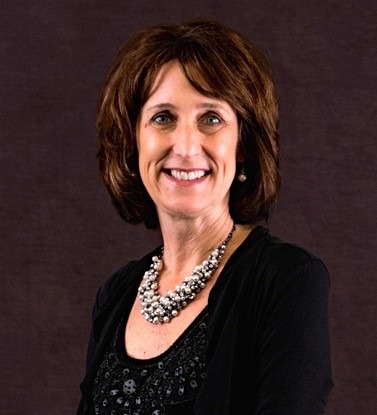
“I think about the word power. And that power is shared. It doesn’t belong to one person or group . . . and I love that about network weaving,”
“I have watched the whole design of network weaving just open this road for people to speak and share and dream, and nothing is impossible”
Maureen Stanek, 2019, Shared Gifting Grantee/Grantmaker
References
Holley, J. (2012). Network weaver handbook: A guide to transformational networks. Athens, OH: Network Weaving Publishing.
Moore, W. P., Klem, A.M., Holmes, C.L., Holley, J. and Houchen, C. (2016). Community innovation network framework: A model for reshaping community identity, The Foundation Review, 8(3). DOI: http://dx.doi.org/10.9707/1944-5660.1311.
Plastrik, P., Taylor, M., and Cleveland, J. (2014). Connecting to change the world: Harnessing the power of networks for social impact. Washington, DC: Island Press.
Stuart, G. (Apr 10, 2014). What is Community Capacity Building? Impact Initiative.

Abena Asante has over twenty years’ experience in philanthropy, public health, and the nonprofit sector. A senior program officer at St David’s Foundation, she leads efforts that catalyze community action around issues and opportunities that align with the Foundation’s firm commitment to achieve health equity.

Dr. William Moore is Principal at The Strategy Group, a Kansas City-based international consulting firm supporting nonprofits, foundations, and communities. Bill is a Senior Fellow at the Midwest Center for Nonprofit Leadership at the University of Missouri – Kansas City, Senior Associate for Rural Health at the Texas Health Institute, and is the rural health advisor to the St. David’s Foundation.
originally published at gih.org
A in Politics from the University of Edinburgh and studied at Sciences Po, Paris as an Erasmus scholar.

Network Weaver is dedicated to offering free content to all – in support of equity, justice and transformation for all.
We appreciate your support!
donate in the box above or click here
Community engagement: How to create meaningful connections in an age of distrust
Community engagement is a term applied in various contexts, often meaning different things to different audiences. It is sometimes used interchangeably with other concepts such as community outreach or community consultation. For the purpose of this article, we utilise the term community engagement to describe a process where local government, charities, and funders collaborate meaningfully with the communities that they serve.
The insights presented in the following text are informed by our experiences working with the above groups. We hope this article is particularly useful to those who are hoping to build stronger and better-informed relationships with their communities.
Community engagement
Community engagement is a key part of any project or programme that seeks to directly enhance the lives of the public. When providing services that affect people belonging to a defined area or group, building relationships within that community is a non-negotiable. Whether you’re a charity, funder or government authority, understanding what communities are thinking and feeling, and taking those thoughts and feelings seriously, is the only road to a legitimate and meaningful partnership.
What is community engagement?
Why is community engagement important?
How should I approach community engagement?
Download The Community Engagement Canvas [Free Resource]
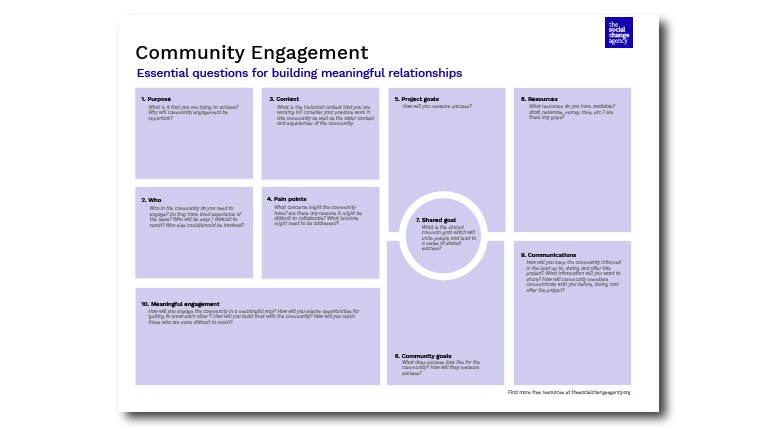
What is community engagement?
Community engagement is all about supporting communities to take ownership of the resources that are available to them. This means taking an active role in creating partnerships between the institution that is providing those resources, such as a local council or charity, and the communities that will be receiving them. Grassroots, voluntary and faith organisations as well as mutual aid groups are deeply embedded in their communities and have a great understanding of local dynamics. This is what makes them such important partners for service providers.
In the simplest sense, community engagement is likely to involve connecting with community leaders and facilitating conversations about what they would like to see happen in their communities. This might look like restoring public spaces such as libraries or a community garden, engaging in discussions around improving housing standards or planning and programming a community event.
Why is community engagement important?
Over the last two decades, trust in ‘big’ institutions has been in a state of flux. Historical events such as Brexit and more recently COVID-19 have shifted our understanding of public life and how we relate to the institutions and organisations that shape it. The latest British Social Attitudes Survey reported that only 23% of people trust the government to put the needs of the nation before the interests of their party. So, how can those with institutional power begin to build back trust with the communities that they serve?
An approach gathering momentum in the US termed ‘earned legitimacy‘ puts forward the argument that it is the role of public institutions to build bridges with communities who have lost faith in their ability to serve. More specifically, it suggests that a public institutions’ legitimacy hangs directly on how much their community trusts them to act justly on their behalf.
Government might be a useful example to illustrate the meaning of earned legitimacy, but we believe that this approach is a solid one for any organisation that has the power, resource and will to engage communities in their activities. In short, it’s on you to put the work in.
How should I approach community engagement?
1. Get real about the role of history
When you work for a long-established organisation with substantial control over wealth and resource, people are likely to have pre-existing ideas about what you do and how you do it. Historically, many communities have been underserved and even harmed by powerful institutions. We see examples of this frequently in the news, whether it’s black individuals being more likely to be subject to stop and search or international charities such as Oxfam’s failure in preventing abuses of power. It makes sense that some communities are sceptical to work with those that have represented racism, mistreatment and harm to them in the past.
‘What are your concerns about this organisation and is there anything we can do to reassure you?’
The Centre for Public Impact recently released a report on how they went about restoring trust between Americans and local government by working with local communities in four different parts of the US. This involved “acknowledging past wrongs and showing a commitment to confront[ing] present-day […] issues.” The report highlights how important it is for historical tensions to be addressed with openness and honesty, especially in the early stages of relationship-building. This may involve asking community members questions such as ‘How do you feel about working with us?’ or ‘What are your concerns about this organisation and is there anything we can do to reassure you?’ before embarking on a shared venture.
2. Recognise that expertise exists within communities
The starting point for community engagement should almost always be that nobody understands what a community wants and needs better than the people belonging to the defined group. Big institutions often work with experts and consultants to problem solve and generate solutions. The Social Change Agency believe that the answers exist within communities and it’s really about creating safe spaces where those insights can be shared. If you are engaging communities in a consultation process, it’s worth considering that individuals should be paid for their time. They’re the real experts.
3. Getting to know each other is work too
With deadlines, budget restraints and the pressure to demonstrate outcomes, we often want to skip small talk and get right to the finished product. If you have the power to write ‘getting to know each other’ time into your project plan, this could really support relationship-building with your community and will almost definitely make things more efficient in the long run. Taking the time to visit the people you’re hoping to engage with and really understanding what motivates them can help to create the conditions for a durable partnership.
4. Communication, communication, communication
Whether it’s email, Slack, WhatsApp or Facebook, the way we interact often shifts depending on audience and urgency. This is no different when we are engaging with community networks. If barriers to communication emerge, it can drastically affect your relationship and slow down the pace of delivery. At the very beginning of your community engagement endeavour, ask community members how they would like to be contacted and what is most convenient for them. Make it as easy as possible to connect but create boundaries around how often and when is appropriate to communicate. This will give you a solid vehicle via which collaboration can flourish.
5. Defining success together
What success looks like to communities and what success looks like to funders, governments and charities are often two entirely things. Success to a local authority might be engaging 20 different community groups in a consultation process before opening a new digital community hub. Community members may visualise success as guaranteeing this space is free to use for certain age groups.
A way of define shared success might be creating an accessible and affordable digital hub designed by and for the community. It’s worth having a conversation about what both of your ambitions are for working together and creating a sense of shared purpose in your collaboration. Establishing a common goal is likely to keep you connected as you move through the logistics of delivery.
originally published at Social Change Agency

Maisie Palmer 's interests lie in social innovation, education, and supporting community-led movements. Prior to joining our consultancy team, she was National Programme Lead for Education at The Roots Programme where she designed and delivered an exchange programme tackling social division amongst British youth. Maisie founded Mxogyny an online and print publication for marginalised creatives. She has also worked for the Secretary of State for Scotland and the International Criminal Court. Maisie holds an MA in Politics from the University of Edinburgh and studied at Sciences Po, Paris as an Erasmus scholar.

Network Weaver is dedicated to offering free content to all – in support of equity, justice and transformation for all.
We appreciate your support!
donate in the box above or click here
Return on Relationships: Four Ingredients of Trust
Trust has become something of a buzzword. Most people will acknowledge that it’s important, yet many see it as a byproduct of other activities, rather than something that should be cultivated deliberately.
On the contrary, the web of connections that develops between participants is the invisible structure that holds all types of collaborative communities together, including working groups, networks, and DAOs. A failure to cultivate trusting relationships is where many communities fall short.
Trust is the element that makes possible all of a community’s other virtues and accomplishments. Specifically:
Trust creates cohesion while a community’s more formal structures and processes are being formed. Nascent communities are unlikely to have many formal agreements in the early stages of their evolution. During this time, it may be difficult for some participants to sit with the ambiguity. Trusting in each other and in the group helps people to be more comfortable with emergence—to explore, experiment, reflect, and self-correct in real time. People also become more willing to share information and take risks. Trust is the glue that keeps a group together as participants develop additional structures for organizing themselves.
Trust increases the group’s collective intelligence and avoids the pitfalls of conformism and groupthink. Under the right conditions, groups are capable of thoughtful discernment and collective intelligence greater than that of any single individual. Lack of openness to others’ perspectives is arguably the greatest obstacle to a group's ability to think and act intelligently. Our tendency, in the absence of trust, is to believe that our assumptions and projections are valid, that we know what others are thinking and feeling without asking them, and that maybe we are the only sane person in the room. Trust increases the likelihood that participants will listen with care, try on new perspectives, and engage with people they might consider to be very different from themselves.
Trust expands the range of possible conversations. People who trust each other are more forthright, more likely to share information, and more likely to show creativity in how they collaborate. With sufficient trust, people are better able to navigate through uncomfortable conversations and test each other’s assumptions without fear of harm. As a result, new perspectives are considered, and conflict becomes generative rather than destructive. The group’s ability to engage in constructive dialogue and make informed decisions grows as people feel free to speak their mind and acknowledge difficult realities or controversial points of view.
This shift has been critical to the success of the Clean Electronics Production Network (CEPN), a program of Green America’s Center for Sustainability Solutions, which has been supported by both Converge and the CoCreative consulting group. Participants of the CEPN include many major technology brands and environmental NGOs that are working together to address an issue that no single organization can solve on its own: moving toward zero exposure of workers to toxic chemicals in the electronics manufacturing process. Relationships between the electronics brands and NGOs were initially tense when the network launched in 2016. But over the past few years, “members have gotten to a point where they have enough trust to where they’re willing to share what’s working, what’s not working, and where they need help,” shares Pamela Brody-Heine, director of the CEPN. “Relationships have been transformed, and the communication between them is much more productive.”
Although it is widely accepted that trusting relationships are beneficial when it comes to collaboration, the common assumption is that trust is a byproduct of other activities and that it takes a long time to develop. Rather than deliberately building trust, the norm is to focus on getting to action and letting relationships develop naturally over time.
However, we have consistently found that trust is the single most important factor behind successful collaboration; communities move at the speed of trust. Therefore, trust should be deliberately nurtured from the outset of a community’s development. When working in collaboration with others, the time you spend cultivating relationships of trust is the greatest investment you can make—consider it a “return on relationships.”
Ingredients of Trust
Trust isn’t just a noun, it’s also a verb—it is something you do. It’s a choice people can make. We either choose to trust someone or choose not to trust them (or we can let our implicit biases make the choice for us). While trust takes time to deepen, we’ve found that it is possible to develop a foundational level of trust in a relatively short time.
Trusting another person requires an initial leap of faith, as it’s impossible to know exactly how things will turn out. The unfortunate reality is that by choosing to trust, you expose yourself to being burned. Nearly everyone has been betrayed at some point in their lives, and it can hurt, a lot. It hurts so badly that we might even put up a barrier between ourselves and others so it will never happen again. For some people who have been oppressed or experienced trauma, including intergenerational trauma, trust cannot be easily given—it has to be earned.
And yet, it’s hard to work with people you don’t trust. People collaborate based on relationships, not solely on ideas. Communities run on trust.
There are four primary ingredients that increase the likelihood that people will choose to trust one another, despite all the uncertainty that relationships bring:
- Reliability
- Openness
- Care
- Appreciation
Reliability
Choosing to trust people is, in part, a judgment that they will be true to their word and follow through on their commitments. Trust grows through action. When people help each other by offering support or contributing to a project, it builds a foundation of goodwill. And when people prove their reliability time and time again by continuing to show up, stick around, and follow through, trust grows to a level of resilience that can withstand significant disruption.
Reliability doesn’t mean that people always have to respond positively to a request for support. It’s important that people feel free to decline when they don’t have the ability or capacity to help. Without space for “no,” there is no weight behind “yes.” Being reliable just means that when you say “yes,” you will do your best to follow through and keep others informed if something goes wrong. On the flip side, reliability also means that when you decline, others will respect and hold you accountable to that “no” as well.
Openness
Inevitably, in any relationship, miscommunications and moments of tension will arise. People may strongly disagree with one another about what to do next. Without sufficient trust, these disruptions can derail the relationship and stall action. Overcoming these rocky periods requires openness—the willingness to be honest and share what’s on your mind, as well as the ability to listen deeply and consider new perspectives.
In the absence of openness, our true emotions and opinions are often guarded or hidden under a professional mask. We also remain closed to new information, stubbornly holding on to past beliefs and closing off new possibilities. To be open is to be willing to share honest thoughts and feelings, even if it’s uncomfortable. By being open, we acknowledge interdependence and invite reciprocity. It’s sometimes assumed that being open with one another comes later, after trust has been developed, but openness is also a great catalyst of trust.
At times, being open may simply be too risky. This is particularly true for those who have been oppressed or experienced significant trauma. They know firsthand that people can and do use their power to exploit others for personal gain rather than collective good. For this reason, make sure to allow people the space they need to engage or not, and to honor distance where appropriate. When openness is not yet possible, a mutual commitment to care may be a first step.
Care
For many, trust does not come easily, because past transgressions have revealed time and time again that people are not to be trusted. Often, the first step toward choosing trust comes when people recognize that others hold a mutual concern for something they care about. Even if it’s hard to trust another person directly, it might be easier to trust the love that someone has for their community or region, or for the network.
Critically, demonstrating care also involves acknowledging and then repairing harm. This may mean creating opportunities for those who have been harmed to share their experiences of past harms, and for those who have historically benefited from resources, unjust laws, and the displacement of others to listen, acknowledge the reality of those harmed, take action to repair the harm, and be accountable for doing whatever is necessary to ensure that harm will not be committed again.
Appreciation
To appreciate one another is to accept people as they are and to value different ways of being, knowing, and doing. People often come to networks with very different backgrounds, identities, experiences, and beliefs. A prerequisite to building trust between diverse groups is that diversity is recognized as a critical part of what makes networks thrive; after all, so much of the potential of network building comes from bridging connections across divides.
In practice, a culture of appreciation is one where many different styles and skills are valued and integrated. Deep trust is possible only when people are able to bring their whole selves to the network and contribute their gifts in whatever way they choose. To create a space where all participants are able to contribute fully, it is necessary to ensure that the dominant culture’s norms are not centered to the exclusion of others—in the United States, this means decentering whiteness such that other ways of being, knowing, and doing can flourish.
At an individual level, sharing appreciations also helps to get people out of their heads and into a heart-centered space, creating room for deeper connections to form. This is why we often have people offer appreciations at the end of a convening, asking them to reflect on “who or what are you appreciating right now?” Sharing appreciations in this way serves to reinforce the prosocial behaviors that the network wants to promote.
Trust creates a foundation of mutual respect upon which participants can hold whatever conversations they need to have to begin working together. In forming a community, we don’t build trust so that people will like each other or agree with each other. Rather, we build trust so that people can hold the tension through disagreement and conflict, find common ground, and work together to achieve mutual goals.

David Ehrlichman is a catalyst and coordinator of Converge, a network of practitioners who build and support impact networks. He is also author of Impact Networks: Create Connection, Spark Collaboration, and Catalyze Systemic Change and producer of the documentary Impact Networks: Creating Change in a Complex World. With his colleagues, he has helped form dozens of impact networks in a variety of fields, and was a founding coordinator for networks in the fields of environmental stewardship, economic mobility, urban revitalization, and Web3. He lives in the Pacific Northwest, finds serenity in music, and is completely mesmerized by his 10-month old daughter.
Appreciate Network Weaver's library of free offerings and resources?
Donate below or click here
thank you!
Social Change Networks Playbook
The challenges that the world faces today, from climate change to highly unequal economic and social structures cannot be solved by one organisation, government or institution alone. We need to collaborate to share learnings, scale innovations and build our collective capacity to bring about social impact.
The social change networks playbook is the product of a participatory learning journey that we as a group of network practitioners, funders and researchers went on together. Together, we made sense of some of the key questions, challenges and opportunities of impact networks, as well as good practices in facilitating and funding networks. This playbook is our humble contribution to share the learnings that emerged from our journey and support fellow practitioners and funders who develop networks for social impact.
We see these networks as groups of individuals and organizations that harness their connections and relationships towards a shared purpose, to learn together and collaborate to achieve a positive impact on a complex societal or ecological challenge.
There is a rich and growing body of both lived experience and research showing that collaboration through networks can enable learning, cultivate awareness, pool resources and widen access to opportunities. Impact networks can be critical to bringing about systems change across sectors, whether this is in education, youth development, gender equality or philanthropy. However, there are still many questions about how networks can become more thriving, adaptable and resilient:
- How do we most effectively take networks from talk to action?
- How do we convey the value of networks?
- How can we better democratise access to networks?
- What are good practices to build networks?
- How can networks drive systems change?
- How do we know when networks are working?
Through this playbook, we begin to share ideas and frameworks to start addressing some of these questions. The playbook is:
- A Practical Guide that is recognizable, useful and immediately applicable.
- A Curated Overview of resources and methods to support deeper learning.
- An Honest Invitation to experiment with collaboration and alignment.
In each chapter we invite you to use the resources and findings we share to reflect, learn and build strong networks in your contexts We acknowledge that we merely scratch the surface of these questions in this playbook. The more we learned throughout our journey, the more questions arose. We, therefore, invite you to also engage deeply with the reflective questions and additional resources.
Here is an overview on the chapters on different puzzle pieces that are important to consider when developing social change networks:
And, here is what other network weavers, facilitators and capacity builders said:
"The playbook is a valuable resource for network leaders and practitioners. Anyone working to create change through collaboration will be well served by reflecting on the questions and exploring the wealth of resources contained within. ” - David Ehrlichman
"Helpful and practical! This playbook is a great reference for practitioners or anyone who wants to learn how to better understand networks for impact and how to develop them. Anyone working with and “developing social impact networks should have this by their side!” - Kerry Lea Forrester, Lecturer on networks at Tilburg University
“Insightful and reflective of the dynamism of impact networks, the playbook offers clear and accessible guidance for network practitioners and funders alike, using a rich variety of real-world examples and resources. Recommended for stakeholders at any stage of their impact network evolution.” - Gwen Beeman – Small Foundation
CLICK HERE to download a PDF of Social Change Networks Playbook.
We hope you will find it as useful in your own work to co-create thriving networks. It is our collective intention and sincere hope that this playbook contributes to our collective ability to realize a more flourishing world for all.
In connection,
The network learning journey cohort, InHive & the project team.
inHive works closely with partners to develop networks that enable communities to leverage existing resources and amplify impact on their local and global communities. We work with partners from around the world – from school networks in Pakistan, to youth leadership programmes across Africa, to global funders – to build skills and expertise, design network structures, and facilitate participatory methods and collaborative activities for shared engagement, learning, and impact.
Creating a supportive network culture
Collective Mind hosts regular Community Conversations with our global learning community. These sessions create space for network professionals to connect, share experiences, and cultivate solutions to common problems experienced by networks.
Our June 16th Community Conversation welcomed Sé Franklin, a coordinator from MenEngage Europe, to share his network’s experiences around developing a core set of values and code of conduct while evolving their network culture in response to the global pandemic. MenEngage Europe is a regional network of MenEngage, a global alliance working toward advancing gender justice, human rights, and social justice and provides a collective voice to engage men and boys in gender equality and gender justice.

Highlights from the conversation
A network’s culture is the shared values, norms, attitudes, and practices of the individuals’ and groups’ behaviors that influence their interactions. The culture should maintain the network’s shared purpose and harness the nature of network practice — one of transparency, inclusivity, and collaboration — by cultivating shared norms and practices in ways that establish constructive dynamics across the network. Yet, much like our Community Conversation on equity articulated, establishing and holding each other accountable to shared norms comes with challenges. Defining, discussing, and modeling network culture can be uncomfortable, complex, and sometimes by necessity, dynamic. However, as highlighted by our co-host, it can also be rewarding and can create brave spaces that ultimately strengthen the network.
Sé discussed MenEngage’s “house rules” — a set of beliefs, values, and code of conduct that its members subscribe to and that can be used to hold each other to account, both in their work and, by extension, how they individually engage in the world. He also shared informal aspects of the network’s operating philosophies and how they have evolved over time. What emerged from the conversation was a number of important and necessary factors that go into holding up a networks’ culture.
When cultivating a network culture, one of the most important aspects is to support and encourage people to be real, present, and accountable and demonstrate this in practice. Many networks and network members are engaged in work that goes against the mainstream while also being geographically dispersed, contributing to a feeling of isolation. Network coordinators and managers can step in and build a ‘personal’ culture that provides care and support for members by creating spaces that feel safe, that acknowledge people’s struggles, and encourage people to be courageous. Alongside that is setting the expectation that participants in these spaces must also be prepared to challenge and be challenged, but to do so with care, sensitivity, and awareness.
Another theme that emerged was the necessity and benefit of network culture evolving and adapting to variable circumstances and becoming a place of care for members in the face of change. The move from in-person interactions to online engagement resulting from the pandemic can be viewed as a positive outcome for many networks, for example. In many cases, it enhanced access to and amongst members and created more supportive connections while also enabling people to engage from the comfort of their homes. A positive byproduct of this operating environment is having created a space in which participants can feel braver, more comfortable, and more reflective than they might have in person.
Just as with centering equity in networks, cultivating a network culture requires trust and the ability of network leaders to invest in efforts that will ultimately foster trust in its network relationships. During the pandemic, MenEngage initiated monthly check-ins centered on checking in on people’s well-being and listening to each other, while also using the time to reconnect with members, rethink the priorities of their canceled annual symposium, and discuss ways to model the culture they were trying to cultivate.
Network culture can be complex and manifest in different ways, as emphasized by our co-host. In some cases, a code of conduct can be documented and laid out as a formal set of rules. In other cases, aspects of the network culture take on a more informal shape, providing the flexibility to evolve under variable circumstances. In still another instance, accountability to a set of norms and attitudes can be linked to the network’s mission, for example, a formal commitment for MenEngage to be accountable to women-led feminist organizations. In other words, network culture is as complex as networks themselves, but a strong and intentional network culture that actively supports its members and maintains quality connections is necessary to harness the transformative power of networks.
Miss the session? View the recording here.
Thanks again to our co-host, Sé Franklin from MenEngage Europe!
Get involved
Have your own experiences with efforts to create a supportive network culture? Tell us about it in the comments below.
Join us for the next Community Conversation!
Or email Seema at seema@collectivemindglobal.org to co-host an upcoming session with us.
Originally published HERE
Featured image found HERE
Seema Patel has been working with mission-driven organizations and multi-stakeholder initiatives for more than 15 years - as a project manager, a volunteer, and an advisor. She has worked in the areas of domestic and global alternative energy, poverty alleviation, social and sustainable entrepreneurship, non-profit web strategy design, and U.S. government management consulting. In her work with Collective Mind, Seema specializes in network analysis, organizational design, knowledge management and learning, and operations.
PLEASE DONATE to help Network Weaver continue in it’s mission to offer free support and resources to networks worldwide.
Organize in Changing the World Together
Are you tired of Slack and Facebook? Have a discussion space like Mighty Networks but no one comes? Want to support network weaving or self-organizing, but the tools fail you?
Then join June Holley and Ari Sahagún on September 8th to explore and help co-design Acter, a platform specifically designed for and with networks (and networks of networks) working on social change. During the session you will have a chance to learn basic network weaving strategies that make online spaces come alive. During the coming months you will have several opportunities to co-design new features of Acter, while trying out network weaving practices -- all at no cost to you.
We know that a tool alone won’t be able to get the job done of network weaving - that’s why we’re pairing practice sessions on weaving and self-organizing with a tool built to learn how to support these person-to-person interactions. We want to enable more and better relationships within networks - for collaboration, sharing thought partnership, and just getting to know each other.
We want to invite you to learn about online network weaving while co-creating a useful space for exactly that. On September 8 (8 am pst, 12 pm eastern, 6 pm cet) we’re offering a one hour interactive exploration of the platform where you can complete a profile, connect to others with similar interests and set up a group space around a topic you’re interested in.
You will get a chance to meet and work with June Holley, network weaver, and Ari Sahagún, movement network ecologist as well as Emil Vincentz and Janne Winther from Acter.
Please sign up for the event through calendly HERE.
Acter can help you find others interested in some of the same things you care about, then easily set up a group space where you can invite others to join. In the next two months, we will be asking you to co-design these learning and work spaces so they meet your network’s needs. We will also be inviting you to help Acter develop an expanded list of ”hot topics” so you can better find other people through maps showing connections among people interested in that topic.
“At long last, a platform designed just for networks and networks of networks! I have been working with the talented acter.global team now for months and I am impressed.”
June Holley
If you want to know more about Acter you can watch our short introduction video below:
A slide show with even more detail is HERE.
We are a tech startup based in Aarhus, Denmark. We are working for purpose and impact, not profit. Any profit we make we reinvest in accordance with the four Cs - company, co-workers, customers, and community. We have a diverse team of people, some are entrepreneurs, researchers, chaos pilots, software engineers, students, artists, activists. We are a relatively young team working to make digital tools assets in creating a regenerative world.
Acter is already working with ReGeneration 2030, DANUBE Youth Network, United Nations Youth Association, Aarhus Municipality among others.
In addition to co-designers, Acter is looking for partners/funders, who are willing to help underwrite the cost of continued development.
Also, if you might be interested in developing a customized site for your grantees or networks, please contact Emil Vincentz at emil@acter.global.
Comparison Chart
| Features | Mighty Networks | Slack | Acter.global |
|---|---|---|---|
| Platform participants are involved in co-designing the site | No | No | Yes |
| People’s profiles help them find others interested in learning or working on a similar topic | Profiles not flexible or useful | No useful profile system | Profiles already have focus, approach and hashtags as part of profiles *Working on more (and you can help co-design) detailed profiling around mutual exchange of skill building, hot topics, etc |
| Profiles are used to create network maps | No | No | In development: working on instant network maps (both geographic and interest clusters identified by profiles, maybe emerging themes in the future) |
| Support for collaborative projects | Minimal | Confusing | Easy to move from cluster to workspace for projects; workspace will soon have links to google docs, zoom, library |
| People can join as part of an organization and part of multiple networks as well as individual | Doesn’t have this capacity | Does not have | Currently being developed |
| Network Weaving training and practice groups are integrated into the site | No | No | Currently being developed; will be available to the Intro Group |
| Create and share activities across multiple groups and networks | No | No | Currently being developed |
| Connect across multiple groups, organisations and networks | No | No | Currently being developed |
| Provide all participants with a set of metrics about the site | Only admin | No | Currently being developed |
Please sign up for the event through calendly HERE.
PLEASE DONATE to help Network Weaver continue in it’s mission to offer free support and resources to networks worldwide.
Intergenerational Practice and Space
This week, Network Weaver is excited to share a 3-part series by Root. Rise. Pollinate! on fostering connection in virtual space. The series was originally published earlier this year at The Reverb.
How we can create beautiful connections and discoveries across generations.
Posts one and two of this series focused on setting virtual space and intentionally cultivating and sustaining the kind of energy required to be in non-physical space together. In this final post of the series, we center the “who” — the mix of people to invite into and be in space with, especially in light of the isolation that’s come with observing COVID-19 physical distancing safety measures. Here we lift up the beauty, imperative for, and power of intergenerational space.
What’s Possible When Young, Middling, and Elders Come Together?
Dominant narratives (including in organizing) often pit young versus old against each other, and render elders as spent, disposable, or out of touch. Our movements too often sideline both younger and older generations, and seldom do we meet. Yet many of us who’ve sat down for conversation or play with elders or those who are younger than us, including babies, know and relish the beautiful connections and discoveries that we can experience in encounters across generations.
We, present day dwellers of Mother Earth are here because of, and through our ancestors, just as some day our descendants will be here because of and through us.
We learn from and listen to messages from the past in order to seed the future, and we too must draw on and commune with all of us — young, old, and in-between — both human and non-human beings.
As you design your virtual space and identify different community members to share breath, ritual, and movement practices, pay attention to the mix, in terms of age, of who gets to hold space. You could pair the youngest and oldest members of your community to share old or new practices that they create together. Or perhaps you could have an intergenerational mix of people in breakout rooms together for intimate conversations and mutual learning. Importantly for learning and deepening relationship, make space for the virtual community to then share what they have heard from each other, what challenged them, what they are grateful for, and what they would like to cultivate and take beyond the virtual space with them. And remember to invite community members to acknowledge, express appreciations, and create opportunities to continue to connect with each other beyond the virtual space.
These physically distanced times have created an opportunity for us to cultivate and create sacred intergenerational relationships that we rarely get in organizing and “movement” spaces.
As we close out this series of posts, we also share with you the power and connection that comes out of being intentional in how you close your virtual space. The beginning is just as important as the end as the end is in fact another new beginning.
Just as we invited you to open and arrive with ritual and breath practice, we invite you to have in place ways in which you bring your space to close. Options include:
- Inviting community members to share short reflections, gratitude, a song, or a poem
- Physically replicate hugging and sharing an embrace with each other
- Rubbing your hands together to generate heat and move energy, then sharing that out by holding your palms out to community members on the other side of the screen, and then receiving the heat and energy to hug ourselves
We hope you enjoyed this series and would love to hear about other rituals, breath, and movement practices that you’re trying out or have found particularly potent in your own virtual gatherings.
Read post 1 HERE and post 2 HERE
Originally published April 16, 2021 at The Reverb.
Root, Rise, Pollinate! is an experiment that aims to catalyze and nurture a transnational community of feminist human rights advancers, organizers and movement builders using embodied practice for social transformation.
PLEASE DONATE to help Network Weaver continue in it’s mission to offer free support and resources to networks worldwide.
